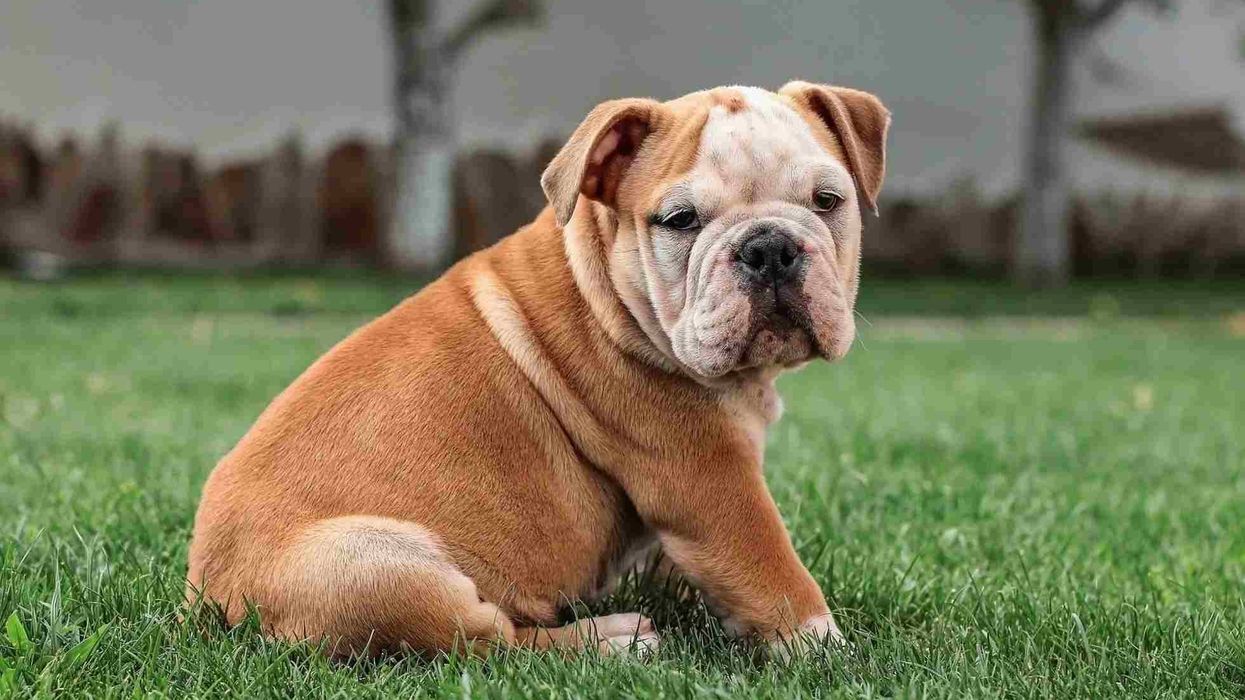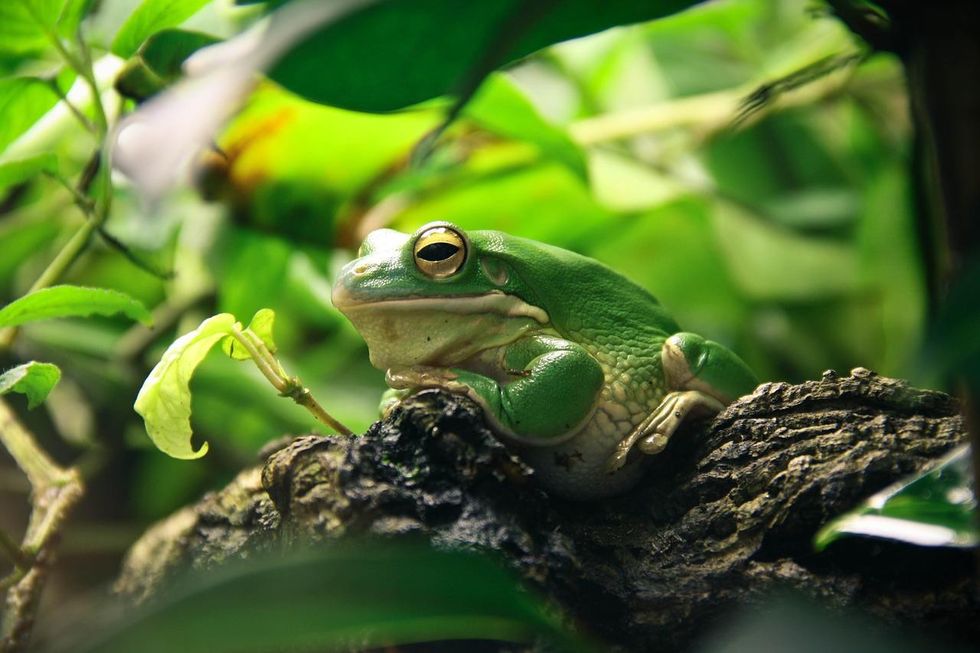Don't let their thick and muscular appearance fool you, Bulldogs are gentle and extremely friendly and they make for loyal and laid-back companions. They even make an ideal pet for children.
The Bulldog is one of the most distinct dog breeds in the world due to its signature physical qualities like its loose skin, stout and stocky body, and non-aggressive personality.
The Bulldog was originally bred in England in the United Kingdom, was then brought to America, and through the decades has turned out to become an extremely popular dog breed all over the world.
There's a lot more to these gentle giants than meets the eye, so prepare to learn some Bulldog health facts and Bulldog facts for kids that will help you decide if the Bulldog is indeed the ideal pet for you or your loved ones.
If you liked reading these fun Bulldog facts and information, you may also want to check out articles about the Victorian Bulldog and the Valley Bulldog.
Bulldog Interesting Facts
What type of animal is a Bulldog?
The bulldog, as its name implies is a dog. Just like most dogs, they make very good pets and companions as long as they are given the right resources, a balanced diet, proper training, grooming, and the right amount of exercise to maintain good health.
What class of animal does a Bulldog belong to?
The bulldog is a mammal as it belongs to the Mammalia class.
How many Bulldogs are there in the world?
While the Old English Bulldog has been labeled as an extinct breed of dog, the breed has evolved into over 10 different bulldog breeds that can now be found in several places all over the world. This suggests that this breed of dog is in no danger of facing extinction, despite having no records of their exact population.
Where does a Bulldog live?
Bulldogs live in houses, usually as house pets. They can live in cities, small towns, suburbs, prairies, and farms.
What is a Bulldog's habitat?
Bulldogs need a cool and calm environment so that they can keep their delicate health needs in check. They tire easily so typical dog sports, or any sport for that matter, should be done in moderation.
A big space isn't necessary for a bulldog to live in. They can live in well-ventilated or airconditioned parts of a house, apartment, or room.
They will also feel comfortable in outdoor areas or porches as long as the weather is not that hot (as this dog breed is also prone to overheating). In places with lower and colder temperatures, sweaters or coats can help them keep warm, and this will also make them look extra cute.
Who do Bulldogs live with?
Bulldogs cannot live on their own as they are quite delicate dogs and are prone to a lot of health issues. Most bulldogs live with their breeders, trainers, or owners.
It is easy to imagine bulldogs living with other animals kept as pets too, as they have a gentle and non-aggressive personality. However, they have a below-average energy level and may not be able to keep up with the constant exercise and dog sports that other breeds excel in.
How long does a Bulldog live?
They are prone to some serious health conditions and have a life span of roughly eight to 10 years. This is a bit shorter than most dog breeds and can live up to 15 years on average.
How do they reproduce?
Both male and female bulldogs reach sexual maturity at six to eight months of age. Any breed should technically be able to mate once they reach this milestone, but their peak maturity begins at 12 months, which is the most ideal time for them to reproduce.
A bulldog's mating process is the same as any other type of dog. However, with the bulldog, in particular, things can get a bit complicated due to certain physical characteristics that the breed possesses.
Bulldogs are bred with the majority of their weight in the front of their bodies and this can complicate the reproductive process. A Bulldog puppy also has a much bigger head and front body than other puppy breeds. This is why Bulldogs should be in the presence of their owner or a veterinarian during mating, pregnancy, and even birth.
What is their conservation status?
Their conservation status is not currently listed by the IUCN.
Bulldog Fun Facts
What do Bulldogs look like?
The bulldog breed is typically white, gray, or brown. They have a bigger head than most dog breeds, a thick and stocky build, loose skin, and wrinkles on their face, neck, and shoulders, with a distinct pushed-in nose.
How cute are they?
Beauty is in the eye of the beholder and we think Bulldogs are super cute. Both Bulldog puppies and adults are quite cute thanks to the popular bulldog temperament which is sweet, affectionate, and child-friendly, despite their sometimes intimidating look and size.
How do they communicate?
While most dogs bark, howl or use body language like licking to communicate with other dogs, the Bulldog primarily communicates by grunting and snorting.
How big is a Bulldog?
This dog is approximately 15-19 in (38-48 cm) long and 12-16 in (31-40 cm) tall. They are around the same size as a Pug or a Welsh Corgi, which are medium-sized dogs as well.
How fast can a Bulldog run?
A dog's running speed varies from breed to breed, and this dog is not built for extensive dog sports or lots of physical activity. The average English Bulldog in good health conditions can run at a speed of 15 mph (24 kph). This can be even slower if the Bulldog is obese or sick.
How much does a Bulldog weigh?
An average male Bulldog's weight is between 50-55 lb (23-25 kg), while a female Bulldog's weight is at 40-50 lb (18-23 kg) on average.
What are the male and female names of the species?
There is no difference in the names of males and females, they are simply called Bulldogs. Although, it is worth noting that from the perspective of breeders, a male dog is called a 'stud', and a female is called a 'dam'. This naming system is applied to all dog breeds.
What would you call a baby Bulldog?
A baby Bulldog is called a Bulldog puppy.
What do they eat?
Domesticated Bulldogs are typically fed meat or fish including beef and chicken by their owners.
Are they aggressive?
Bulldogs are not natural-born predators and are quite gentle with humans and other animals. Despite their tough-looking exteriors, they are far from aggressive. In fact. their temperament is calm, collected, loyal, and naturally affectionate.
Would they make a good pet?
As mentioned previously, the Bulldog makes a perfect family pet as long as you give your dog proper training and nourishment Before adopting a Bulldog, you must also make sure that you have the right environment and resources to raise them as these dogs are a sensitive breed that is prone to quite several health issues such as overheating and anxiety.
They are also susceptible to respiratory ailments due to their pinched nose which makes breathing difficult.
This is a condition that sadly results in a lot of Bulldogs dying each year.
Remember, if your Bulldog isn't keeping up with you on a long walk, he isn't being lazy, he may be struggling to get enough air in his lungs!
Did you know...
Former British Prime Minister Winston Churchill was once compared to a Bulldog and since then, the English Bulldog breed has been a symbol of courage in the way he led the country to victory during World War II.
In the 1500s, the primary use for the Bulldog breed was for bull baiting (the act of grabbing a bull’s nose and roughly shaking it). At this time, bullbaiting was a hugely popular sport.
Bulldogs tend to drool all the time, not because they are hungry, but because their upper jaw hangs over their lower jaw. This lower jaw protruding farther than the upper jaw is responsible for their underbite and causes these dogs to drool a lot.
Bulldogs are one of the most popular dog breeds used as a school or sports team mascot. Around 40 American universities and sports teams have named their team mascot after the breed! For example, Handsome Dan the English Bulldog is Yale University's most famous college canine mascot.
Bulldog Types
There are several different types of Bulldogs all over the world, and there are also lots of Bulldog mix breeds. They come in different shapes, skin coat colors, and sizes but it is a common trait that most types of Bulldogs have a flat face which makes them prone to respiratory problems.
A few different types of Bulldogs are the British Bulldog, American Bulldog, French Bulldog, and Victorian Bulldog.
There are also lots of hybrid Bulldogs like the French Bulloxer and the Bullypit, which is a mix of a Bulldog and an American Pitbull Terrier.
Having Your Own Bulldog
Bulldogs make for the perfect family pet because they are affectionate and kind to adults and children, and even to other pets. You have to make sure that you have the right resources and a good environment for this dog to live in.
You must also provide it with enough physical activity to maintain optimal health conditions and improve its quality of life. Training a Bulldog will require lots of treats and positive reinforcement, but also a firm hand to show them who's boss.
Most importantly, Bulldog owners must put in the time to care for their pets. This intelligent pet thrives when given lots of love, loyalty, and companionship!
A typical bulldog price costs somewhere between $1500-$4,000. It is an expensive pet for a lot of reasons and their maintenance and health bills can be quite pricy too depending on how well they are cared for.
Here at Kidadl, we have carefully created lots of interesting family-friendly animal facts for everyone to discover! Learn more about some other mammals including the Boxer Bulldog Mix, or the American Bulldog Pitbull Mix.
You can even occupy yourself at home by drawing one on our Bulldog coloring pages.










